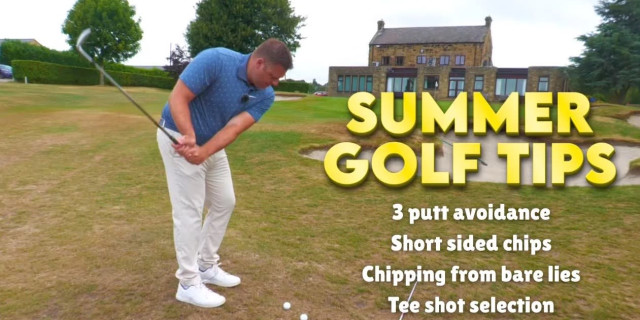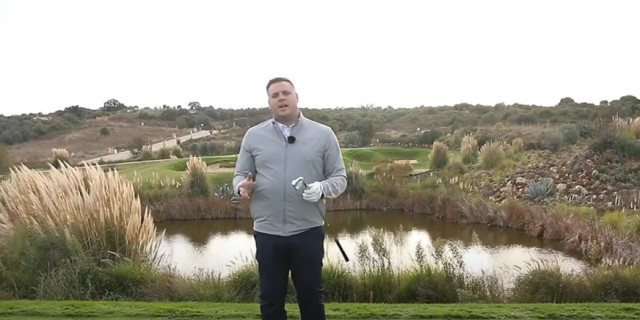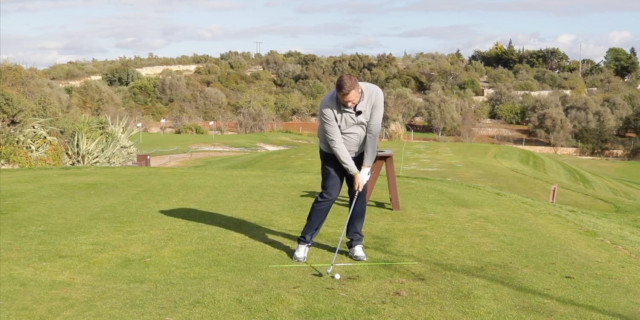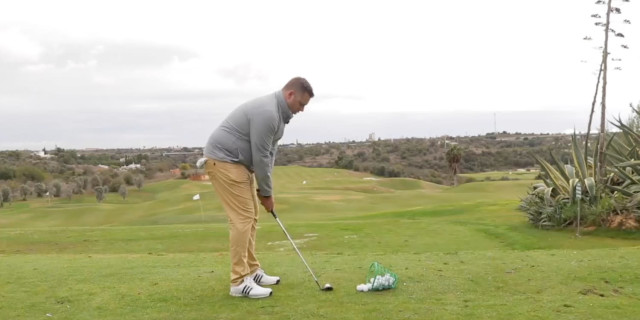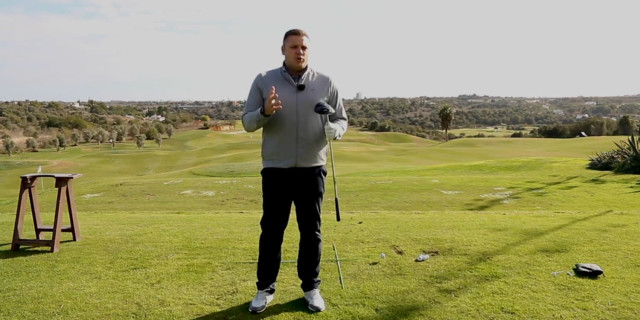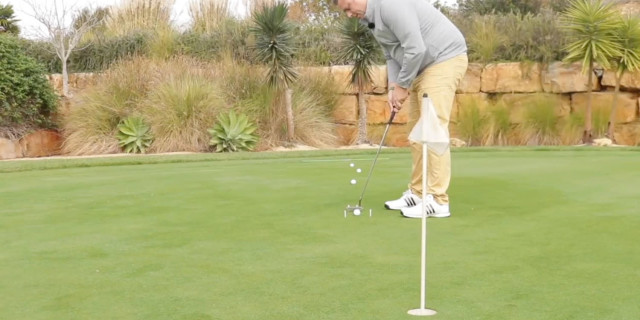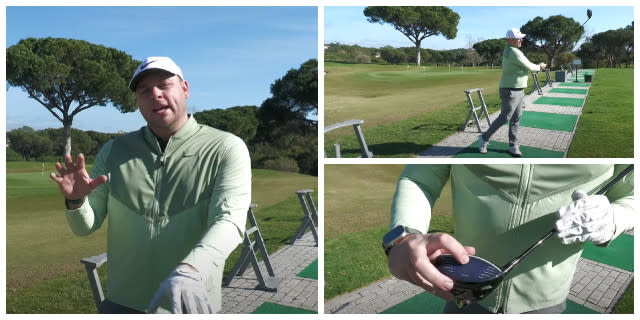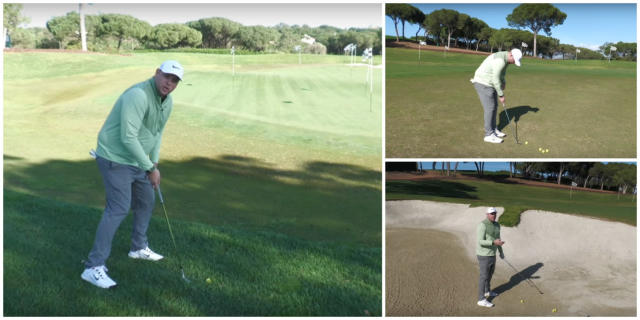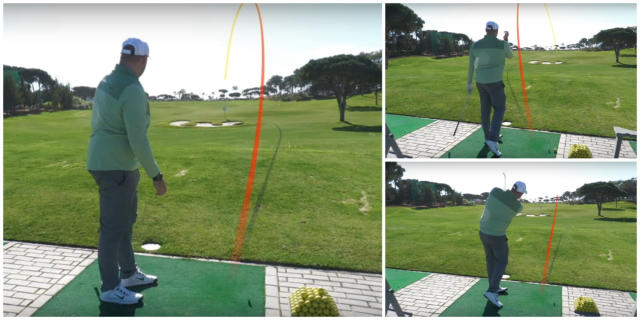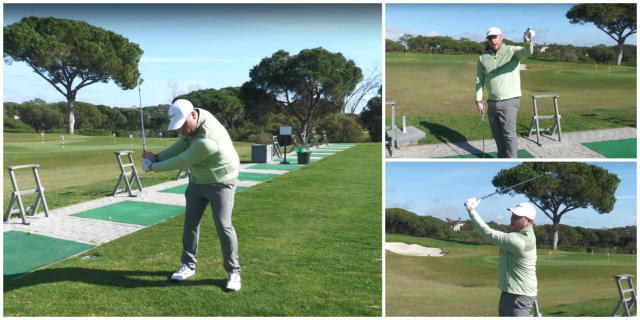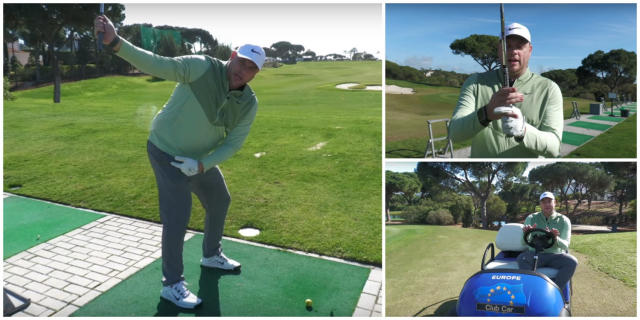The only way to really learn is on the course
The only way to really learn, improve and enjoy golf is out on the course, The traditional flat surfaced practice ground is a good starting point to get a grip of the swing or improve the fundamentals, but it doesn't fully prepare the golfer for the 'real life' conditions on the course.
The majority of good golfers have had the advantage of playing since childhood, experiencing multiple rounds, in which they've naturally learnt to deal with the many varied and awkward lies the golf course demands. These golfers have typically played first before concentrating on the technique of the swing. Unfortunately, this natural path to playing good golf is a luxury that those who take up the game in their adult life rarely experience. In fact, current teaching practices mean that adult learners are almost always forced to do the opposite, spending the majority of their time attempting to develop 'the perfect swing' and very little time on the course learning and playing the game.
I don't want to dismiss learning about the swing, but it shouldn't take too long and certainly shouldn't become the sole purpose of tuition. A swing is just a swing and however much time is spent on trying to perfect one, it means nothing if it can't be applied in practice. This is why as a professional, I strongly encourage new golfers out onto the course in the early stages of learning even if their swings are not yet experienced or established. At its most fundamental, playing on the course gives a taste of the real game, the thrill of staring down a fairway to the flag beyond, the heroics of getting a ball out of the Bunker , the subtlety of landing the ball on the green rather than in the rough beyond and the euphoria of hearing the plop of the ball in the hole. - these are all just as much a part of the game as the swing, and quite frankly, is what brings the game to life! So experiencing this early on is likely to feed a golfers enthusiasm to learn and develop and to help them fully grasp the point of the swing they are developing- it's not always to go straight with a 7 iron, but to negotiate dog legs, to miss the rough, to get over the hill or make a birdie!
I'd advise that beginners visit a small local course in the late afternoon, when most of the members and regulars will be back in the club house. If you can, go with a pro and just walk around a few holes, dropping balls along the way and start to get a feel of what it’s like to take a swing on grass, on an uneven lie, from the rough, up a hill and maybe even from a bunker. Try not to concentrate on where your ball goes, but instead on getting a sense of the reality of playing on the course. I've often seen beginners experience almost an 'aha!' moment where they 'get' for the first time what the swing is all about! This early experience introduces a different dimension to learning the game and helps reduces the pressure of finding the perfect swing.
Once a beginner is feeling more confident, I’d advise going out with a sympathetic golfing friend, or someone to walk round with. I suggest the following 'rules' to get through the first few rounds: Crucially, play only nine holes to start with. Even experienced golfers often notice deterioration in their game nearing the end of a round when concentration is going a little, and the mind has turned to refreshments rather than holing putts. So take away that pressure by starting with 9, and if the course allows, then try 9 and a loop before embarking on the whole 18. Remember the course is for playing, not for practising the swing, so I suggest focusing on what you want to achieve for each shot, rather than the swing itself- Try and be kind to yourself, so if a hole isn’t going as you planned, or you find your ball in a dreadful lie, move it, and if you are getting frustrated, pick up your ball and start again at the next hole. Probably the most important point to remember is don’t add up your score- it’s irrelevant and likely to sap confidence early in the learning process. The more relaxed and happy a golfer feels playing their own game, the more likely they will be to go out again and slowly begin to feel more confident out on the course allowing their game to progress naturally.
Related Content:
James Ellis is the Professional at the leading indoor golf facility, Urban Golf and is also the creator of POCKET PRO GOLF APP.
Download James's 'THE PRO THATS ALWAYS WITH YOU' app featuring 25 lessons here via the iTunes store or visit www.pocketprogolf.co.ukRelated Video
James Ellis
James is a golf professional with over 20 years' experience and a great passion for changing the way golfers learn how to enjoy this great game.
Latest Articles- Video: Play the Perfect - Ball Below Your Feet
- Power vs Touch
- Video: Play the Perfect - Bunker Shot Buried Lie

